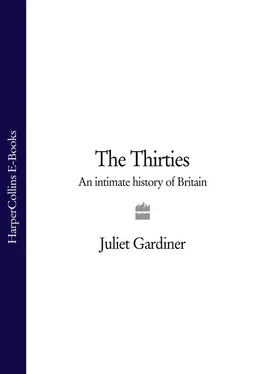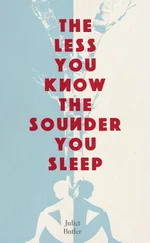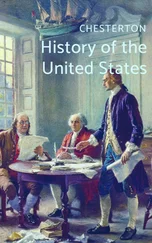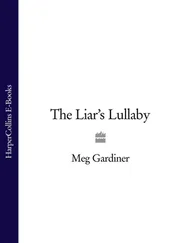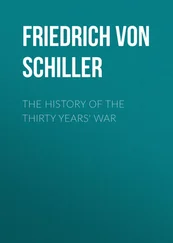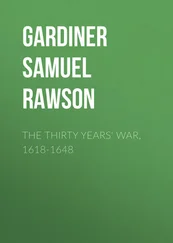The NUWM did have victories in getting local PACs to raise benefit rates, or to impose the Means Test less harshly, and it also evolved a system of local committees trained in legal aspects of unemployment regulations and benefits to advise members, and, supported by advice from the legal department, to represent a member who took his or her appeal to the National Umpire at Kew. So successful was this growing expertise on national insurance questions that the NUWM was sometimes asked for help by a trade union branch, and William Beveridge invited Wal Hannington and Sid Elias to advise official committees on several occasions.
The Maryhill local branch of the NUWM in Glasgow was
a hive of activity … People coming in were getting cut off from benefit as a result of the Means Test and all the other anomalies that were introduced then. And their case was taken up and there was always somebody at the Labour Exchanges representing them … the NUWM was organising, fighting appeals against the decision when people’s benefits were cut, even turning out when people had been evicted for arrears of rent, advertising the many demonstrations which were taking place in Glasgow — at least one a week, where anything from 5,000 to 20,000 people were turning up … we used chalk or whitewash in the streets … we had a problem eventually. There were so many demonstrations taking place — unemployed and other — there wisnae enough space left at the street corner to advertise them all.
Michael Clark was ‘never a member o’ the Communist Party. I was in sympathy quite a lot, but I never did join … these fellows read politics and history goin’ away back hundreds of years about the Clearances in Scotland … the big shot landlords and all that. I’d time for adventure books, but no time for politics!’ Nevertheless, Clark took over as rent convenor on behalf of the NUWM in Greenock, taking direct action in disputes. ‘We’d go to a house where eviction was threatened [for falling behind with the rent] and sit in the house … as many of us as possible, to occupy the house so’s they widnae get takin’ the furniture. And then we’d negotiate with the Parish Council and councillors … to get like a settled fee … for them to pay the rent, make up the arrears.’
The NUWM also organised social events for the unemployed: country rambles, football matches, whist drives, socials, study circles, concerts and dances. ‘The jiggin’, the dancin’ was right popular — many of the best dancers in town went. Well, you could say that the unemployed got plenty o’ time to practise! They got quite a good band together … they could go up to town and at the Palais de Danse they could have held their own wi’ the best o’ them.’ Then there were days out for the children of the unemployed — including an outing to Battery Park near Greenock for 4,700 children who were provided with milk and buns and a bag of toffees to take home.
The charge stuck, however, of a movement controlled from Moscow, financed by ‘red gold’ and aiming at revolution. Yet if the NUWM attracted only relatively small numbers, the Communist Party certainly did no better. By August 1930 membership, which had peaked at 12,000 immediately after the General Strike in 1926, had fallen to fewer than 2,500, while the Labour Party had around 200,000 individual members. Since 1929 the CPGB had been pursuing the Communist International (Comintern)-dictated ‘class against class’ policy, identifying the Labour Party as the ‘third capitalist party’ and ‘social fascists’, and had severed links with other left-wing organisations including the ILP.
Villages such as Mardy at the head of the Rhondda Valley and Lumphinnans in the West Fife coalfield were demonised as ‘Little Moscows’ for their industrial militancy, opposition to the coal owners — and to the capitalist system in general — and their supposed unwavering support for communism (though the ‘class against class’ policy had eroded cooperation in local politics with Labour built up over a decade — as it closed so many doors — and reduced the CP to an opposition party). Miners formed the hard core of the membership, but the party was strongest in London and Scotland. While most CPGB members were relatively young, working-class men, by late 1932, 60 per cent of them were out of work, and that figure was higher in Scotland. There were few female members, since women had been ‘completely neglected’ in the drive to grow a mass party, and the Young Communist League could only claim two or three hundred members.
Moreover, the avenues of persuasion could be narrow. In Bolton, members of the Communist Party petitioned the central library to subscribe to the Daily Worker and periodicals such as The USSR in Construction and Labour Monthly , as well as to purchase what the local press dubbed ‘red’ books (such as Lenin’s Complete Works and Plekanoff’s Fundamental Problems of Marxism) . The chief librarian circulated sample copies for a month, but the Library Committee gave hardly an inch, agreeing only that Labour Monthly could be placed in the reading room — and that for a trial period of six months only.
Nevertheless, the decision had been taken not only to try to grow a mass working-class revolutionary movement, but also to engage in electoral politics. However, Communist candidates performed poorly, and seemed unable to capitalise on growing disappointment first with the Labour, and then with the National Government. Even in Seaham, Ramsay MacDonald’s own constituency, disgust with the ‘great betrayer’ did not translate into support for the Communist candidate, who only picked up 677 votes. The Party’s most solid support was in London and the depressed mining areas, particularly those in Scotland and South Wales, and at the depth of the Depression in January 1932 membership had risen to 9,000. Yet in the Merthyr Tydfil by-election in 1934, Wal Hannington only managed to pick up 9.4 per cent of the votes, and the Communists were hardly more successful in local elections. In Gateshead even a local ‘Douglas Credit’ candidate polled more votes than the Communist contender, and no council in England was ever controlled by Communists. Although Communist participation in elections was of considerable ‘nuisance value’, splitting the left vote and sometimes, as in Whitechapel in London’s East End, West Fife and a Sheffield seat, letting in a Conservative or National candidate, it was not until the 1935 election that the Party managed to send an MP to Westminster, when Willie Gallacher won West Fife and Harry Pollitt, the General Secretary, came within a whisker of being returned for East Rhondda.
Attempts to build an industrial base met with little success either: the Minority Movement, the Communist industrial organisation, urged the setting up of alternative unions to rival existing trade unions, but only two ever came into being: the United Mineworkers of Scotland, based in the coal mines of Fife, and the short-lived United Clothing Workers of East London. The Minority Movement never attracted more than seven hundred members, and when it was finally wound up in 1933 it could claim only 550 party members organised in eighty-two factory cells.
The Party’s greatest problem in the early 1930s was its retention rate: if the NUWM leached members, so did the CPGB, partly due to ‘rotten’ organisation, and partly to the rigour and commitment demanded of recruits to the cause. An anonymous member of the Bromley Communist Party in Kent recalled that it had been ‘a serious decision’ when, after much discussion, eight people ‘decided that the time had come to make a commitment to the Communist Party … for one thing the police, including the special branch, took a great interest in the activities, however trivial, of even rank and file members of the party. Secondly, a great many employers refused to employ anyone known to be associated with the party, and lastly, it meant virtual segregation and exclusion from the work of the Labour Party and even some Trade Unions.’ Cut off from the rest of the ‘reformist’ left, the CPGB built itself something of a world within a world. ‘Like practising Catholics or Orthodox Jews, we lived in a little private world of our own … a tight … self-referential group,’ frequenting cafés such as Meg’s in Parton Street in London and the Clarion in Market Street, Manchester (‘Communists met in cafés rather than pubs: there was quite a strong inhibition against drink’), the pro-Soviet Scala cinema in Charlotte Street in London, Henderson’s ‘bomb shop’ (which became Collet’s bookshop) and others in King Street and the Farringdon Road, as well as meeting at dances and whist drives organised by the Friends of the Soviet Union, the League of Socialist Freethinkers, the Rebel Players and the Federation of Student Societies, and the activities of the Workers’ Theatre Movement and the British Workers’ Sports Federation. They rambled collectively at weekends, took holidays at Socialist youth camps or Communist guest houses, or stayed in youth hostels as part of hiking trips (some YHA wardens were rumoured to be ‘sympathisers’). If the expenditure of £5 was feasible, they might take a week’s holiday with the Workers’ Travel Association in the Lake District, or maybe the Trossachs.
Читать дальше
